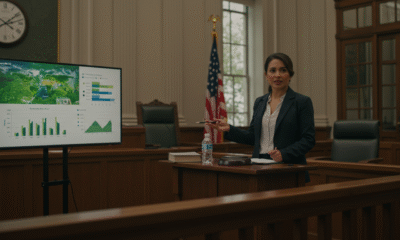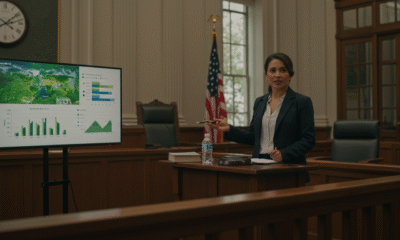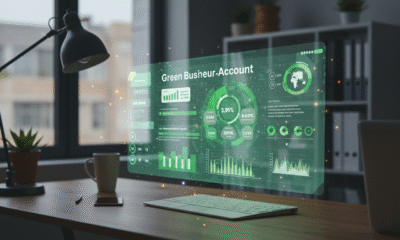Are you running an eco-friendly organization? Technology is going to play a huge role in your operations.
Technology has both positive and negative impacts on the environment. One of the benefits of technology is that it can help eco-friendly nonprofits and green businesses operate more efficiently.
However, it is important to use technology wisely if you want to get the most from it. This is going to involve making sure that you keep your data secure.
Keep Your Data Secure While Running a Green Business
When you’re involved in activism for an environmental organization, you’re going to be working with a plethora of documents. Some of these documents might be images and videos, but many will be Microsoft Word and PDF documents. You’ll likely be sifting through manuals, documentation, contracts, meeting notes, and random bits of information.
Do you have a way to find your documents easily? Can you control access to your documents to ensure they’re only accessible to the right people? If you give full access to all of your documents to everyone, you’re risking a security incident that could even turn into sabotage.
Sadly, green businesses are not immune to cyberattacks. Since most eco-friendly startups are small businesses, they are at a growing risk of being victims.
Access to company information should only be granted on a need-to-know basis. If you let someone go, they might publish private information or access and sabotage your files.
Document organization and security are essential, so here are 4 ways to securely manage your environmental organization’s documents.
1. Use a secure cloud-based file storage platform
Can you find what you’re looking for easily and quickly? Do you know where specific files are located? When you take on new staff, do they know where to look to find key documents? If locating your documents is frustrating to any degree, you need better organization. However, you also need to make sure your documents are stored securely.
You can get both organization and security with cloud file storage platforms like Box. Box is compliant with various data protection regulations and offers a variety of security controls to users. For instance, you can set permissions for each file to be view-only or allow it to be downloaded. You can even set links to expire so that access is revoked after a certain period of time.
Using a secure, cloud-based file storage platform is the best way to control access and ensure your files are securely stored in the cloud.
2. Password-protect your PDF documents
When you have sensitive information contained within PDF documents, it’s wise to password-protect them. This is a long-term security strategy that will ensure your files aren’t read by the wrong people if they are ever exposed in a data breach or if someone’s device is stolen later on.
Ideally, if you need to disseminate information in documents, it’s best to convert them to PDF files and disable the ability to highlight and copy text. The downside is that if anyone needs to share the information, they’ll have to type it up manually. However, if the information is truly sensitive, it will be more secure in a password-protected PDF saved in read-only format.
3. Have multiple backups
You can’t have too many backups because you never know when a media storage device might fail, get lost, stolen, or be dropped. Having multiple backups is critical, but it will only be effective when you regularly back up your files.
Try to keep at least two external hard drives with your important data and create backups regularly. If you edit your files weekly, make your backups weekly. If you update files more frequently, back up your files accordingly.
Avoid using USB flash storage for backups. Unlike real external hard drives, flash storage has a finite lifespan. You can only access your files a certain number of times before the drive will fail. It’s okay to use these drives to transfer data between devices and to share with others, but don’t rely on them as a backup.
4. Utilize redundancies
If you update your files on a regular basis, it’s a good idea to utilize redundancies. However, this is in addition to having multiple backups. Backups are often confused for redundancies, but there is a difference. While backups are essential, they’re just additional copies of your files stored on various media drives. Redundancies are a fail-safe measure.
Redundancies are basically additional internal hard drives that keep your information stored on multiple drives at once. This way, if one hard drive fails, you’ll have your files on the other. The most common type of redundancy is a RAID 1 and RAID 5 configuration, and it’s best to have it set up by an IT professional to make sure it’s done correctly.
Eco-friendly for-profit and nonprofits need secure file storage
Your environmental organization has a mission to complete and getting hacked or sabotaged will severely disrupt your mission. Whether you’re a nonprofit or for-profit organization, you need a secure file storage solution.
It’s not worth risking a data breach or data loss – keep your data secure and organized to avoid preventable issues.


 Environment10 months ago
Environment10 months agoAre Polymer Banknotes: an Eco-Friendly Trend or a Groundswell?

 Environment11 months ago
Environment11 months agoEco-Friendly Home Improvements: Top 7 Upgrades for 2025

 Features9 months ago
Features9 months agoEco-Friendly Cryptocurrencies: Sustainable Investment Choices

 Features10 months ago
Features10 months agoEco-Friendly Crypto Traders Must Find the Right Exchange






























